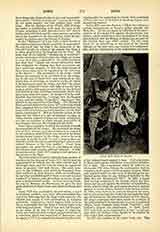

Lossen, KARL AUGUST, German petrologist and geologist, b. at Kreuznach (Rhine Province), January 5, 1841; d. at Berlin, February 24, 1893. After finishing his studies at the gymnasium of Kreuznach in 1859 Lossen became a mining engineer; he began by two and a half years of practical work, then studied at the Universities of Berlin and Halle, where he graduated in 1866; in the same year he became assistant geologist of the Prussian national geological survey and as such began immediately his famous petrolographic studies of the Harz Mountains, which lasted till his death. In 1870 he became instructor in petrology at the Berlin mining academy, and at the same time lecturer at the university: in 1873 he was made a member of the newly founded Prussian National Geological Institute, and in 1882 received the title of professor; he was a fellow of the Gorres Society from its foundation. In 1886 he became extraordinary professor in the university. He published the results of his investigation in over one hundred treatises and notices which appeared for the most part in the “Zeitschrift der deutschen geologischen Gesellschaft” of 1867-1891 and were much valued by his fellow scientists. The work of his youth, “De Tauni montis parte transrhenana” (Halle, 1867), appeared independently; then in 1877 followed the maps of the geological survey of the Harz Mountains and later many special maps of the Harz district, and the exhaustive work, “Boden der stadt Berlin“. Of great importance are his papers on the contact and dynamometamorphosis of minerals. So highly was Lossen considered as an authority on this subject that the committee in charge of the program for the International Geological Congress in London requested him to present a paper on the origin of crystallized slate (printed in 1888). He was made a member of Belgian, French, and English learned societies. The mineral lossenite is named after him; it is a hydrated lead-iron sulpharsenate from the mines of Laurion in Attica.’ Lossen was a man of noble character, loyal, dutiful, kind-hearted, full of good humor and universally popular, notwithstanding his increasing deafness. As a Catholic he united a childlike piety with very strong convictions of faith and decided views for church authority.
J. H. ROMPEL

